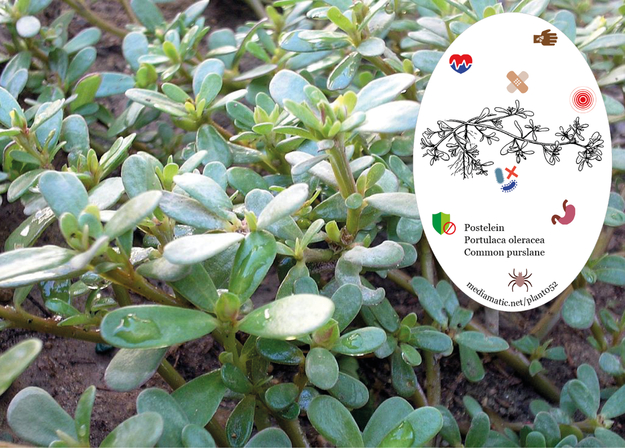Purslane is a small plant that originates from Asia and the Middle East. It’s an annual, so it needs to be resown every year. This plant has cold feet, so don't sow it too early.
Leaves and flowers
The leaves are edible and have a slightly sour and salty taste. It can be eaten raw or cooked shortly like spinach. In the summer months purslane grows small yellow leaves. However, the flowers only open up a couple of hours in the morning.
Properties
The plant is antibacterial, antiscorbutic, depurative, diuretic and febrifuge. The leaves are a rich source of omega-3 fatty acids, which is thought to be important in preventing heart attacks and strengthening the immune system. Seed sources such as walnuts, however, are much richer sources. The fresh juice is used in the treatment of strangury, coughs, sores etc. The leaves are poulticed and applied to burns, both they and the plant juice are particularly effective in the treatment of skin diseases and insect stings. A tea made from the leaves is used in the treatment of stomach aches and headaches. The leaf juice is applied to earaches, it is also said to alleviate caterpillar stings. The leaves can be harvested at any time before the plant flowers, they are used fresh or dried. This remedy is not given to pregnant women or to patients with digestive problems. The seeds are tonic and vermifuge. They are prescribed for dyspepsia and opacities of the cornea. Source: https://pfaf.org/
How to grow
This plant is easy to grow from seed. Just sprinkle the seed on some loose soil and cover very thinly. A good time to start sowing is April-May, to make sure that the soil does not get too cold. When it’s warm enough (around 20°C), the plant should be ready for harvest in 6-8 weeks. After cutting it, the plant will grow back. In the summer months the plant should be protected from direct sunlight. It prefers half-shade. Purslane is not too picky about soil conditions. It prefers a well drained soil that is not too fertile. It is moderately salt tolerant. Interestingly, the plant is supposed to get more salt tolerant after the first cutting.
